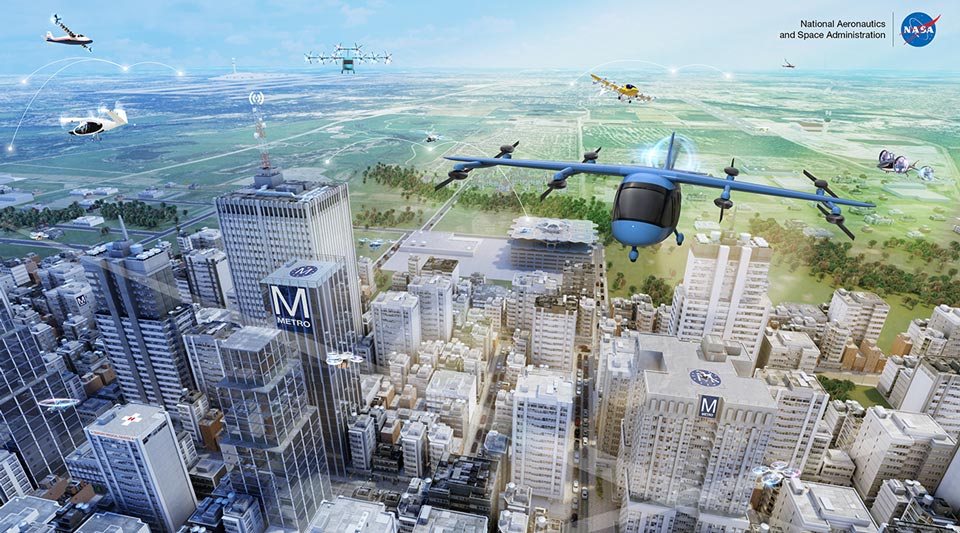With NASA funding, Notre Dame will lead a multi-institution, multi-million-dollar project to ensure safer skies
Drones flying at low altitude are increasingly being used to support activities ranging from emergency response to package delivery to agricultural surveillance.
How can we ensure air traffic safety?
With support from NASA, Notre Dame computer scientists and engineers are leading the development of an automated decision-making capability system that will ensure small drones are safe to enter congested airspaces before they fly.
This system will replace the current manually intensive process, which has limited ability to handle increasing levels of drone traffic executing complex missions.
Jane Cleland-Huang, Frank M. Freimann Professor of Computer Science and Engineering, leads the project.
“The NASA grant gives us a unique opportunity to contribute Notre Dame’s expertise in data analytics and flight coordination,” she said.
“We’re prepared to develop innovative solutions for NASA’s uncrewed drone traffic management system, which will make skies safer.”
NASA’s current drone traffic management system allows uncrewed vehicles to integrate into low-altitude air space without relying on air traffic controllers. Flight details are shared electronically so that drones are authorized for flights in controlled airspaces shared with other drone, airplane and helicopter traffic.
Notre Dame will enhance this system by developing decision-making software that permits or denies flight requests by evaluating a drone’s safety track record, equipment readiness, operator preparedness, and maintenance procedures.
The $5.3 million grant to Notre Dame (over 3 years) is one of four NASA University Leadership Initiative grants awarded this year that give university faculty and students opportunities to solve key challenges facing the future of flight.
Huang is the chair of computer science and engineering at Notre Dame and the faculty director of Drone Response. Her research team for the NASA-funded project includes computer science and engineering faculty members Nitesh Chawla, Siddharth Joshi, Taeho Jung, Douglas Thain, and research scientist Michael Murphy, as well as researchers and personnel from Iowa State University, Saint Louis University, University of Texas in El Paso, DePaul University, and the DroneResponders Public Safety Alliance.
Graduate students and undergraduates will be involved in the research at every level.
— Karla Cruise, Notre Dame College of Engineering
